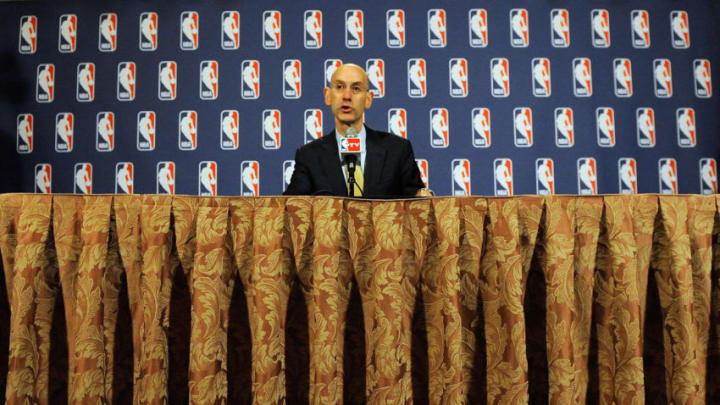
Fans of the NBA are anticipating its return after a grueling, quarantine-induced hiatus. Here’s how the league could potentially come back better than ever.
Upon entering its now 10-week-long hiatus due to the COVID-19 pandemic, the NBA finds itself in a very precarious situation. Notable moments of the past decade—the 2011 lockout, the Donald Sterling incident, Daryl Morey versus the government of China (yeah, that happened!)—each temporarily burdened the league with their own respective problems. But a global quarantine?
This current situation isn’t just a flash in the pan, it’s unprecedented.
More from Hoops Habit
- 7 Players the Miami Heat might replace Herro with by the trade deadline
- Meet Cooper Flagg: The best American prospect since LeBron James
- Are the Miami Heat laying the groundwork for their next super team?
- Sophomore Jump: 5 second-year NBA players bound to breakout
- NBA Trades: The Lakers bolster their frontcourt in this deal with the Pacers
This time around, the NBA and its executives have countless narratives that they need to properly control if they hope to remain in good standing with the general public. Are they keeping player safety at the forefront of their decision-making process? Are they heavily considering all options that are on the table? Are they actively searching for smarter and safer alternatives?
Most importantly for the NBA, are they able to answer ‘yes’ to all of the above questions while continuing to remain financially stable? How does the league mold all of those questions into one resoundingly positive outcome?
While the post-hiatus future of the league hinges on that very question, it is crucial not to undersell how important the viewer experience is in the overall equation. Yes, player safety is absolutely paramount. And yes, NBA executives critically analyzing every available option is imperative to a successful return. Make no mistake, though: For better or worse, the fans are the ones who determine whether or not the NBA is a monetary success in the first place.
Over the last decade or so, countless ideas to make the NBA a better product have been mentioned throughout television talk shows, radio segments, podcasts, and articles alike. Being a relatively forward-thinking organization, the NBA has even taken many of these possibilities into strong consideration.
So, while fans would gladly settle for any basketball they can get, consider this: If things are already going to be different, isn’t this the perfect time to test some of those new ideas?
We can already pencil in the fact that there will be zero fans in the audience. Not only could this be visually unsettling, but home-court advantage will be nonexistent as a result, thus removing a vital dynamic of the game. Whether the league plans to mask the sound of dribbling with some form of audio remains unknown, but that would still leave much to be desired. Don’t think so? Picture this:
The Miami Heat squaring off against the Indiana Pacers as the uncensored version of Meek Mill’s ‘Dreams and Nightmares’ loudly reverberates throughout the small, empty gymnasium in which they play. I can’t be the only person who believes this has all-time awkward potential. Taking it one step further, it would be a real challenge to take a game seriously when the background noise is reminiscent of a pre-recorded sitcom audience.
Regardless of the NBA’s decisions, things are going to feel strange. The quicker we accept that, the better off we are as a viewing audience. However, because things will be so drastically different, it is almost impossible to imagine a better time to test some of those frequently mentioned potential changes.
What could be changed, you ask? Here are some ideas.
